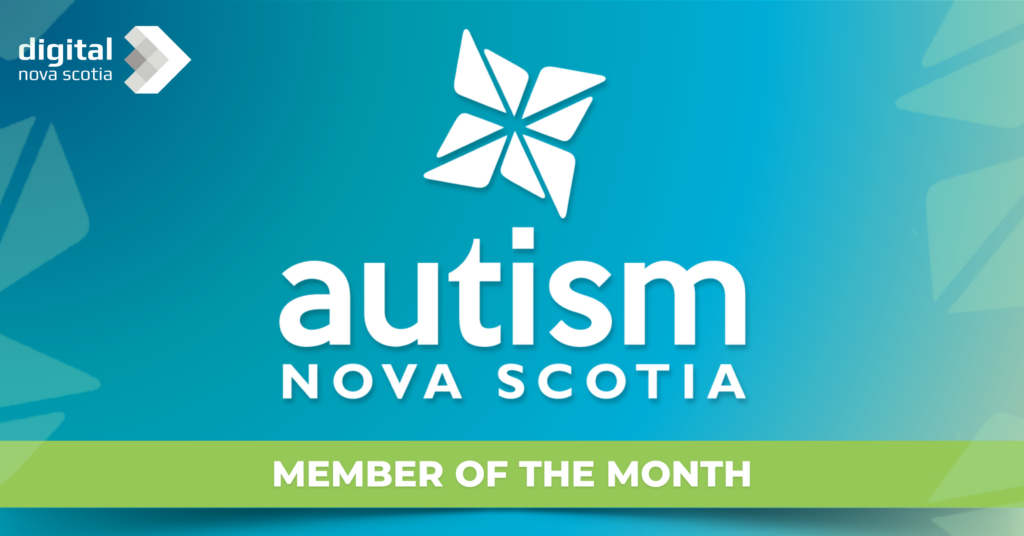
June 24, 2024
A Nova Scotian non-profit organization is harnessing the power of technology to create new opportunities for individuals on the autism spectrum. Autism Nova Scotia, established in 2002, is at the forefront of integrating tech solutions to support and empower individuals in the autistic community.
Founded by Joan and Jack Craig, parents of a son with Autism Spectrum Disorder, Autism Nova Scotia has grown significantly since its inception. With a mission centered on the needs and goals of the autistic community, Autism Nova Scotia operates through 10 offices across the province, providing a range of programs and services to support individuals and their families. The organization’s diverse team includes therapists, counselors, support workers and administrative staff, all contributing their specialized expertise.
“These are some examples of the employees that make up Autism Nova Scotia, but it is by no means an exhaustive list,” said Lynn Yuilll, Manager of Community Events & Giving. “We employ so many hard-working and specialized staff who make all the work we do possible.”
A recent collaboration with Digital Nova Scotia exemplifies Autism Nova Scotia’s commitment to inclusion and diversity in technology.
“While we are just beginning our work with Digital Nova Scotia, we already feel excited to partner with an organization that has created strong bonds throughout our community, connecting people and organizations through engaging events, learning opportunities, and social media,” she said.
“We are also so happy to connect with a group that places importance on promoting inclusion and diversity. Digital Nova Scotia’s Tech Forward Awards are an inspiring step in the right direction to welcome underrepresented communities into the tech field.”
The integration of technology has opened new horizons for those on the autism spectrum, said Yuill. Assistive communication devices and apps, such as speech-generating devices and visual schedules, have revolutionized how individuals with communication challenges express themselves and manage daily routines.
“Educational software and online platforms provide personalized learning experiences tailored to individual needs and learning styles, helping to bridge gaps in traditional education,” said Yuill. “Virtual reality and augmented reality can create immersive environments for social skills training, allowing Autistic individuals to practice real-world scenarios in a controlled, low-stress setting.”
Technology also enables remote work opportunities, allowing for flexible employment tailored to individual strengths and sensory needs, said Yuill, adding social media and online communities offer spaces for connection and support, helping to combat isolation.
“Overall, technology serves as a powerful tool to empower autistic individuals, fostering greater independence, inclusion, and quality of life,” she said.
Which is evidenced by the growing demand for more tech-focussed education and opportunities.
“Autistic people have expressed a need for more specialized training programs, access to assistive technology, and opportunities to develop skills that can lead to meaningful employment in the tech industry.”
Aside from helping the autistic community, technology has “significantly improved” the accessibility and inclusivity of Autism Nova Scotia’s services in several ways, said Yuill.
During the pandemic, it was vital in maintaining operations and facilitating virtual meetings, which allowed those with transportation barriers in rural areas to participate in groups and programs. Over the last five years, the organization has expanded its education and training services through online webinars, staying connected, providing support to team members across the province, increasing accessibility and reducing feelings of isolation.
“Virtual programs have allowed participants to join from the safety and comfort of their homes, minimizing social communication anxieties,” said Yuill.
Technology has also enabled centrally-funded programs to be accessible across Nova Scotia. Tools such as chat functions in Zoom have facilitated non-verbal communication, while social media platforms have helped share important information and amplify Autistic voices. Tools like Canva have improved the development of visual and engaging program materials, and QR codes have reduced barriers in the registration and intake process.
“Overall, technology has expanded the capacity for services, especially in rural areas, and allowed for innovative program delivery and engagement formats,” Yuill said.
Technology will certainly play a role in Autism Nova Scotia’s recently announced Autism Action Plan—a bold and comprehensive strategy crafted in partnership with government departments and community.
“This plan is more than just a collection of goals and objectives; it is a promise—a promise to build a society where Autistic individuals and their families are not only recognized but celebrated for their unique strengths and contributions,” said Yuill, adding this plan represents the culmination of years of advocacy and community feedback.
“We could not be happier to finally see its adoption by the government!”
